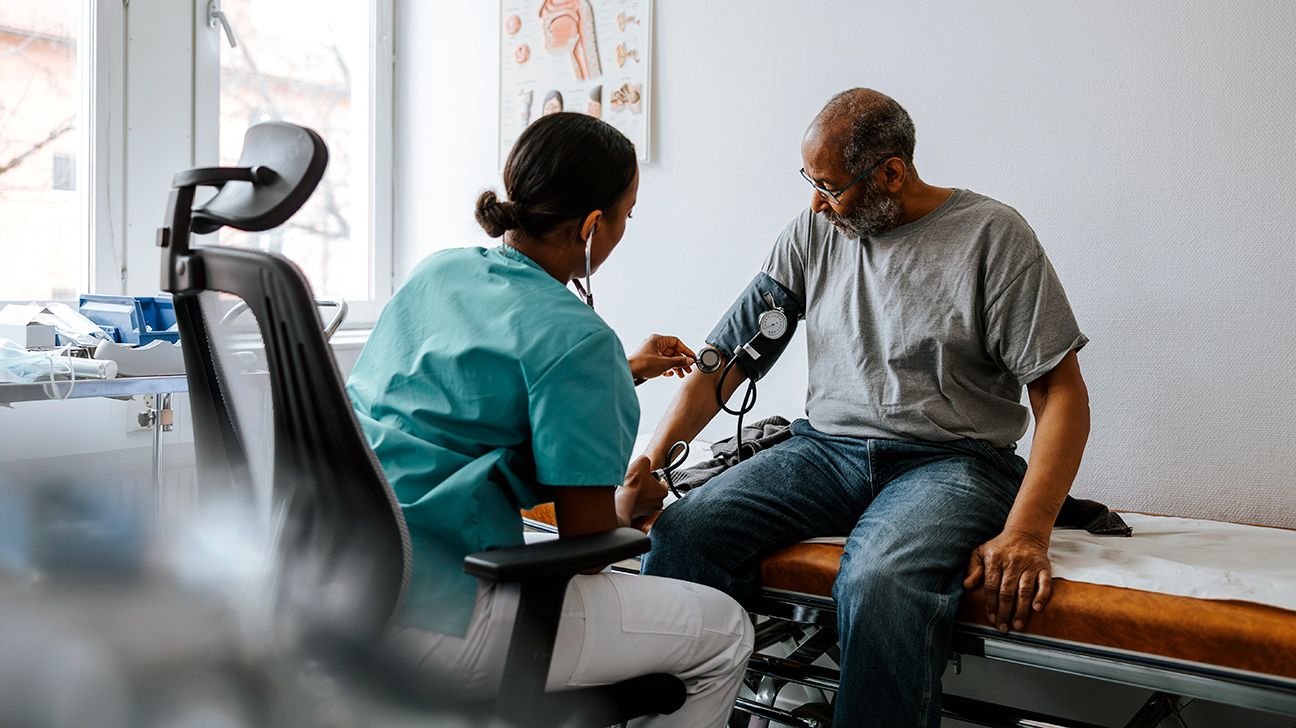
- New blood pressure guidelines from the American Heart Association (AHA) reaffirm earlier recommendations and include some key changes.
- The new guidelines recommend earlier treatment for high blood pressure and abstaining from alcohol.
- They also emphasize the dangers of hypertension during and after pregnancy.
New blood pressure
Hypertension affects about
The latest guidelines are largely unchanged from the 2017 version, published nearly a decade ago. The core recommendation remains intact: adults should achieve a blood pressure of less than 130/80 mm HG.
They also continue to emphasize the importance of diet, salt intake, and weight loss as modifiable lifestyle changes that can help achieve this goal.
But there are also important changes and updates too, namely earlier and more aggressive treatment of hypertension.
“For the vast majority of people, the advice provided in the 2017 guidelines still holds,” said Randall S. Stafford, MD, PhD, a professor of medicine and director of the Program on Prevention Outcomes and Practices at Stanford Medicine. Stafford was also a member of the AHA’s hypertension guideline committee in 2017.
“These updated guidelines suggest more intensive treatment of high blood pressure in the presence of hypertension-related disease. The intensity of treatment is slightly greater for people with chronic kidney disease, coronary artery disease, diabetes, and a high risk of future cardiovascular events like stroke and heart attack,” Stafford told Healthline.
Here are the main takeaways from the new guidelines, as well as actionable steps you can take to lower your blood pressure.
The categories of blood pressure did not change this year, but when to seek treatment has. The stages of hypertension are classified as:
- Normal: less than 120/80 mm/Hg
- Elevated: 120–129 / less than 80
- Stage 1 Hypertension (High Blood Pressure): 130–139 or 80–89
- Stage 2 Hypertension (High Blood Pressure): 140 or higher or 90 or higher
- Severe Hypertension: higher than 180 and/or higher than 120
- Hypertensive Emergency: higher than 180 and/or higher than 120
Earlier guidelines recommended treatment with lifestyle changes and medication for people with blood pressure readings above 140 mm Hg, classified as stage 2 hypertension. The new guidance lowers that threshold to include those with readings in the 130–139 mm Hg range, or stage 1 hypertension.
Doctors are expected to start with lifestyle changes for three to six months. If blood pressure remains above target after that period, medication may be added.
Alongside this change, the guidelines also recommend the use of the
“There is now more clear and robust evidence that intensive lowering of blood pressure reduces the risk of cognitive decline and dementia,”
In another shift, the guidelines now recommend minimal — ideally zero — alcohol consumption.
“These new guidelines make clear that when it comes to alcohol consumption, less is more. In fact, the data that informs these guidelines suggest that eliminating alcohol intake altogether may have the most favorable impact on blood pressure, particularly for patients with existing hypertension,” said Daniel Muñoz, MD, MPA, executive medical director of the Vanderbilt Heart & Vascular Institute, Vanderbilt University Medical Center. Muñoz wasn’t involved in the new guidelines.
For those who do choose to drink alcohol, the current recommendation is no more than two drinks per day for males and no more than one drink per day for females.
Despite this, Stafford noted that “there is no safe level of alcohol exposure.”
Although unchanged, the latest guidelines reinforce earlier recommendations of limiting sodium intake to less than 2,300 milligrams per day, with an ideal goal of just 1,500 mg (about ¾ of a teaspoon) per day.
“The new guidelines make clear the importance of moderating and limiting the amount of dietary sodium intake, given the clear linkage between excess sodium intake and high blood pressure,” Muñoz said.
Although managing salt intake can be challenging, experts recommend a few simple tactics, such as:
“The guidelines include important new recommendations for how to treat blood pressure during pregnancy, including an emphasis on the importance of monitoring blood pressure during the post-partum period. High blood pressure during or after pregnancy can endanger the health of the mother and can also impact the health of the child,” Muñoz said.
“The DASH diet is a well-proven tactic for blood pressure management. It is well-balanced and rich in nutrients, including from fruits, veggies, [and] whole grains. It’s also low in salt and low in saturated fats, all of which contributes to better cardiovascular health,” said Muñoz.
Additionally, other lifestyle factors, including exercise and weight loss are important contributors to lowering blood pressure and greater overall cardiovascular health.
The guidelines recommend the standard target of 150 minutes per week of moderate exercise. They also highlight that even moderate weight loss of 5% body weight is enough to achieve health benefits and improve blood pressure.
“Excess weight puts excess strain on the heart and excess load on our blood vessels. By losing weight, we reduce this strain and allow our cardiovascular system to operate at its best. I’ll also add that it’s best to lose weight in safe, sustainable ways, especially through a healthy diet and regular exercise,” Muñoz said.
The guidelines also acknowledge GLP-1 drugs and bariatric surgery as effective weight loss interventions that also aid in lowering blood pressure.
While there are no major overhauls of the general recommendations this year, the updates do provide timely, up-to-date information about the most important steps individuals can take to reach their blood pressure goals.
The guidelines are also a reminder that although high blood pressure is pervasive, it is also highly treatable.
“It is often referred to as ‘the silent killer‘ because there are no symptoms of high blood pressure for a lot of people. This latest information will help people to make wise and informed choices about reducing their risk of heart disease, stroke, dementia, and chronic kidney disease by managing their blood pressure through lifestyle therapy and medication, if appropriate,” Jones said.


